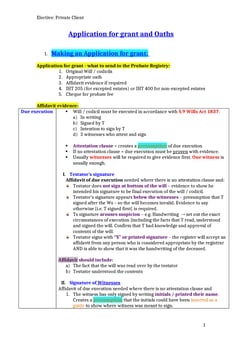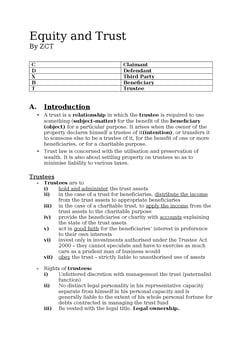Saunders v Vautier [1841] EWHC J82; [1841] 4 Beav 115; 49 ER 282
Judgement for the case Saunders v Vautier
Table Of Contents
KEY POINTS
A legatee with an indefeasible interest in a legacy isn't obligated to wait until the specified accumulation period ends; they can demand payment once competent to provide a valid discharge.
FACTS
-
The Testator, Richard Wright, left a will where he bequeathed all his East India stock to his executors and trustees, with instructions to accumulate the interest and dividends until Daniel Wright Vautier was twenty-five.
At that point, the principal, accumulated interest, and dividends were to be transferred to Daniel absolutely.
-
Daniel Wright Vautier was an infant at the time of the testator's death, and a suit for estate administration was instituted.
During this time, a portion of the dividends from the East India stock was allocated for Daniel's maintenance.
-
Daniel turned twenty-one in March 1841 and petitioned to have the fund transferred to him immediately, arguing that he had a vested interest and could waive the accumulation period.
Mr. Pemberton argued on behalf of Daniel that he had a vested interest and could request an immediate fund transfer, citing legal precedent.
-
The Master of the Rolls (Lord Langdale) agreed with Mr. Pemberton's argument, stating that if a legatee has an absolute indefeasible interest in a legacy, they are not bound to wait until the specified accumulation period ends, but can request payment as soon as they are competent to provide a valid discharge.
Mr. Kindersley, representing the residuary legatees, argued that Daniel did not have a vested interest until he turned twenty-five.
The Master of the Rolls noted that the issue had likely been decided or assumed previously when the Lord Chancellor made an order for maintenance, and he saw no reason to doubt its propriety.
He deemed it inconvenient to re-argue the point in court.
The matter was then deferred to the Lord Chancellor, who held that the legacy was vested and ordered the fund transfer to Daniel.
JUDGEMENT
In this case, the judgment affirmed that if a legacy was directed to accumulate or the payment was postponed, a legatee with an absolute indefeasible interest could demand payment once competent to give a valid discharge.
When Daniel Wright Vautier turned twenty-one, the court ruled that he had the right to request an immediate fund transfer, rejecting the argument that his interest was contingent upon reaching twenty-five.
The Lord Chancellor ordered the transfer of the legacy to Daniel.
COMMENTARY
The case of Daniel Wright Vautier provides an intriguing exploration of the intersection between testamentary intentions, beneficiaries' rights, and equity principles within inheritance law.
At its core, the case delves into the question of when a legatee with an absolute indefeasible interest can demand payment, particularly in instances where the testator has stipulated an accumulation period or postponed payment.
-
The testamentary disposition made by Richard Wright, as outlined in his will, exemplifies a common practice in estate planning: establishing trusts with specific directives regarding the distribution of assets.
In this instance, the testator bequeathed his East India stock to his executors and trustees, instructing them to accumulate interest and dividends until Daniel Wright Vautier reached the age of twenty-five when the principal and the accrued income would pass to him.
-
Subsequent legal proceedings shed light on the interpretation and application of such testamentary provisions.
As Daniel was an infant at the time of the testator's death, the court was tasked with safeguarding his interests, including providing for his maintenance during his minority.
The Master of the Rolls, now Sir C. C. Pepys, approved an allowance of £100 per year from the dividends of the East India stock for Daniel's maintenance, demonstrating the court's commitment to ensuring his well-being until he reached adulthood.
-
The important moment arose when Daniel, upon attaining the age of twenty-one, petitioned for the immediate transfer of the fund to him.
His argument rested on the principle that a legatee with an indefeasible interest should not be bound by the accumulation period prescribed in the will.
Mr. Pemberton, representing Daniel, contended that Daniel had the right to waive the accumulation period and demand payment forthwith, citing legal precedent to support his position.
For Further Study on Saunders v Vautier
Need instant answers? Our AI exam tutor is here to help.
Ask questions 🙋 Get answers 📔 It's simple 👁️👄👁️
Our AI is educated by the highest scoring students across all subjects and schools. Join hundreds of your peers today.
Get StartedRelated Product Samples
These product samples contain the same concepts we cover in this case.
| Private Client | Wills Notes (10 pages) |


